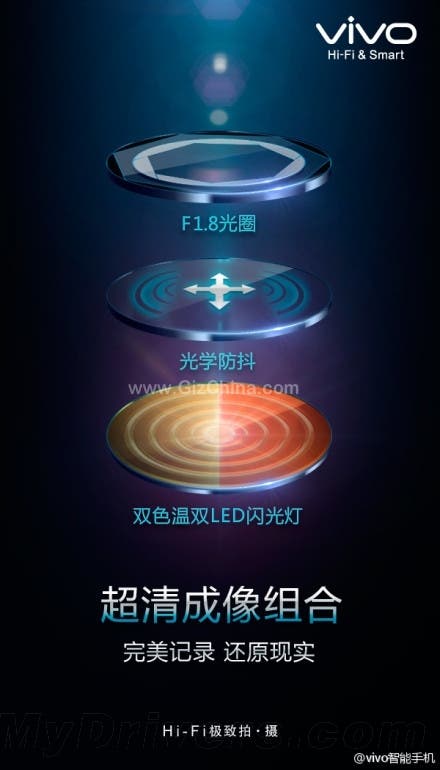Vivo’s Xshot is confirmed to get an F1.8 aperture and OIS (optical image stabilisation), a world first!
The Xshot is going to be Vivo’s next Android smartphone and their first camera centric device. Being designed with photography in mind the Xshot is going to have some nice features in the camera department including a 13 mega-pixel sensor, dual LED flash but more exultingly a F1.8 aperture and OIS (optical image stabilisation).
What’s more the front camera has been seen in Antutu as a 7.68 mega-pixel sensor, and the phone will have a 2.5Ghz Snapdragon 801 processor, 3GB RAM, 32GB memory, Android 4.3 and be good for around 36,730 points in Antutu.
While OIS is a first for a Vivo phone a F1.8 aperture isn’t. The current Vivo Xplay 3S has a similar sensor but without OIS, impressive as that sounds reviewers in China haven’t been all to impressed with the set up on the Xplay, hopefully the Vivo Xshot will be better.
[ Vivo Facebook ]





Who need this high cost Chinese smartphones?
Most of people buying it because it has low price around 150-300$ not more, and has same built quality than other brands. It is crazy for me to buy expencive piece of plastic for 500$
andi wats the difference b/w f1.8 and f2.0. which one is better?
f1.8 is better. F says how fast and stabile the sensor is. f number is a set of properties of the sensor (not full set). Simply, it says that f1.8 will catch more light at the same shutter speed (compared to f2.0) which means it can use faster shutter speed and capture a lot of light at night shots with less chance of blurring and ruining the photo. Also if you capturing macro shots, while you focus on your main target, the background will be more blurry than f2.0.
F1.8 is a 1/3rd of a stop less than f2.0 – 100th/sec vs 125th/sec
BUT
The loss in light is 19% (1.8/2.0 squared), Which in real life is negligible.
Sensor size on the other hand does make a difference.e.g. Nokia/Sony Z2 with their 1/2.3″ sizes.
Background blur is nice but better with some shape to it, I think it works best with software or L series Canon Lenses.